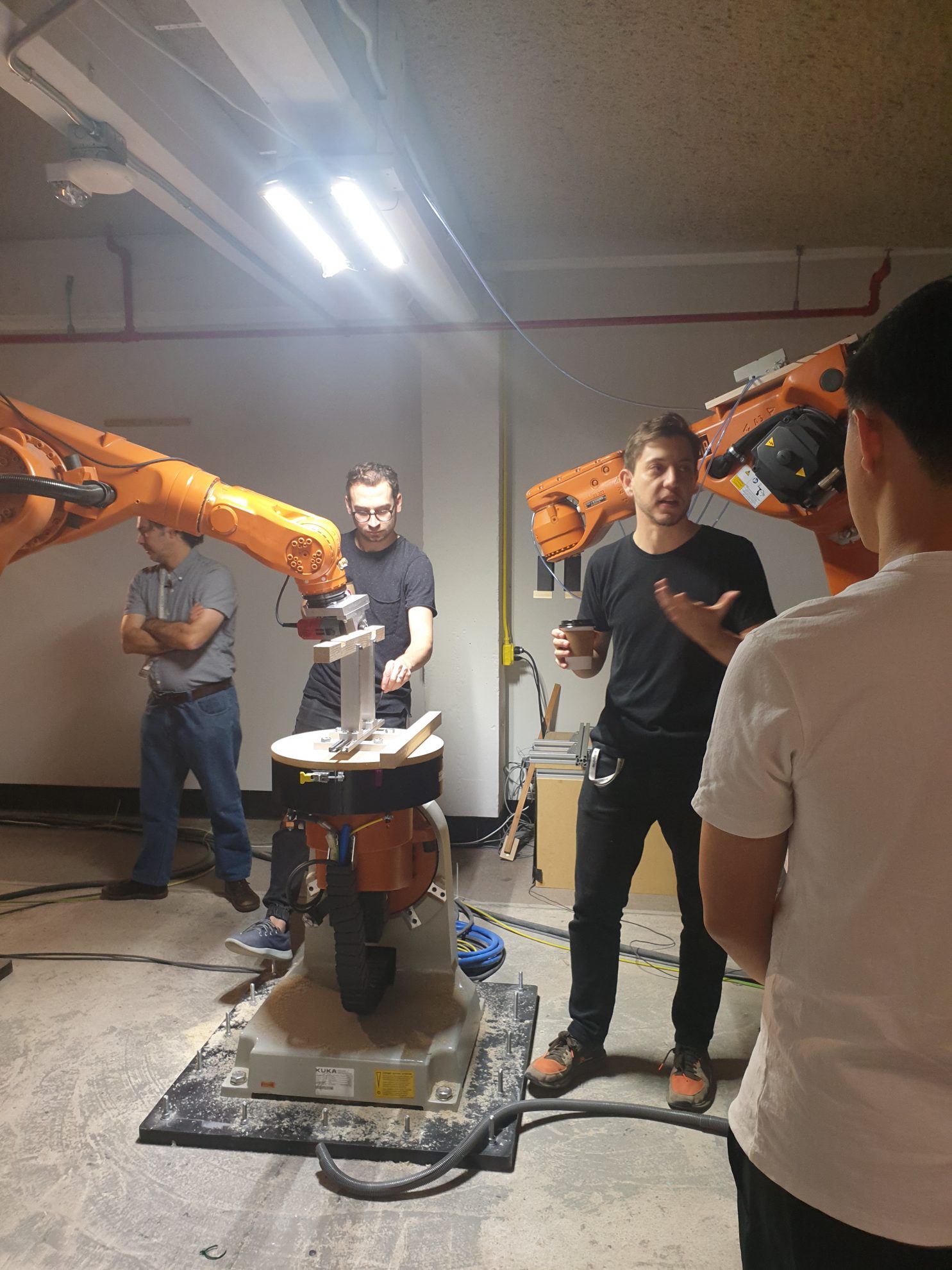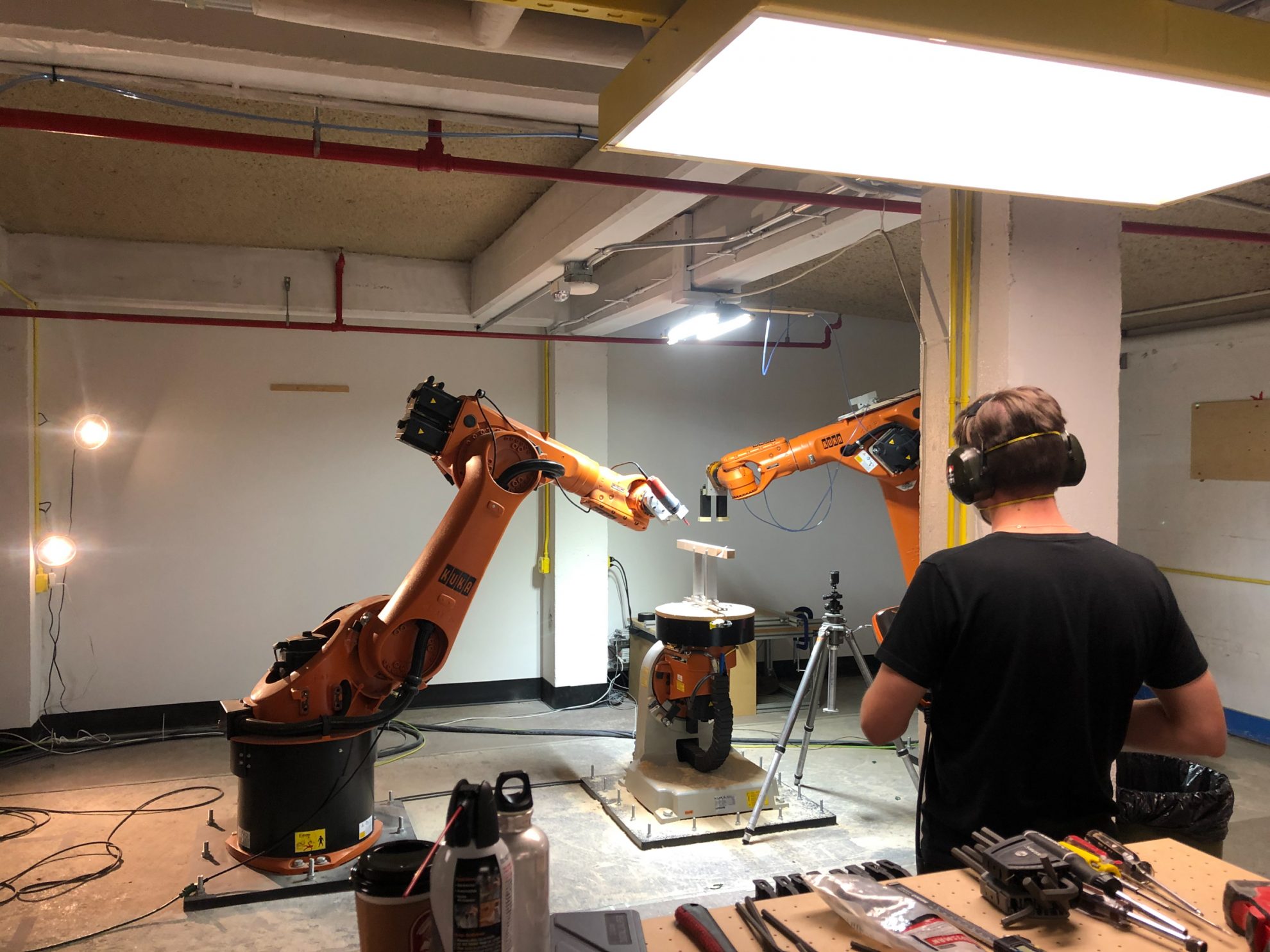COX VOX: Tristan Morgan, James Park and Mark McKenna on the 2019 ACADIA Conference
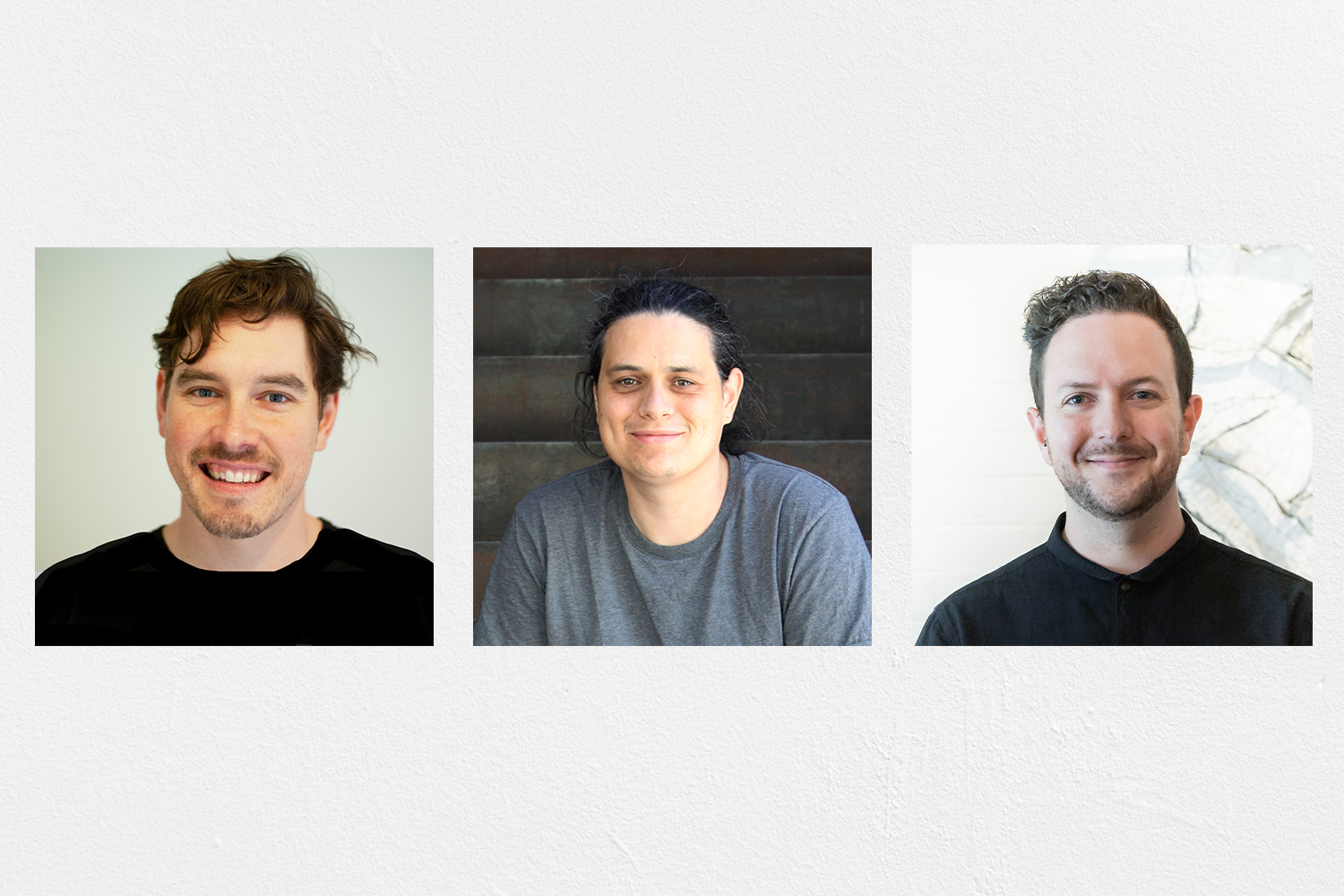
The Association for Computer Aided Design in Architecture (ACADIA), an organisation that connects architects, design professionals, and researchers working with digital technology, held its annual 2019 conference at the University of Texas at Austin. Titled ‘Ubiquity and Autonomy,’ this year’s conference explored the blurred divide between analogue and digital processes.
As new technologies emerge, the very nature of how technology is being used in the scope of architecture is expanding. This year’s conference focused on this, facilitating key conversations around (but not limited to) computational design requiring new theories, modes of operation and systems of production.
COX employees James Park, Mark McKenna and Tristan Morgan all travelled to the University of Texas to attend the 2019 workshops and conferences. To better understand what the event aimed to achieve, and what they took away from it, we sat down with the three of them.
ACADIA note that we are in a period defined by ‘ubiquity’ and ‘autonomy.’ What trends and developments suggest this to be true?
Tristan:
I think that both those notions can suggest multiple things. In the first instance, computational thinking has become ubiquitous across all scales of architectural practice, leading to greater adoption and integration of automation. At a second glance, however, this ubiquity also opens up the opportunity to reconsider the role of computation in practice, and critique current approaches – how are we, as practitioners and custodians of the built environment, engaging with global challenges such as climate change, inequality, sustainability, changes in our cities; are we exploiting the true transformative power of computation; are we becoming too comfortable with its currently known or perceived benefits? As for autonomy, this too raises the prospect of the role of computation within research and practice – is it a distinct, autonomous, field; what is the impact of autonomy on design; what is the future of human-machine relationships?
We are seeing an accelerating interest in Artificial Intelligence and Machine Learning, accompanied by much democratised – and pervasive – computation illustrated by the rise of AEC start-ups and the renewed focus on interface and experience. At the same time, new construction techniques driven by robotic fabrication and automation are proliferating, and we must consider the massive impact this will have on the entire project life-cycle.
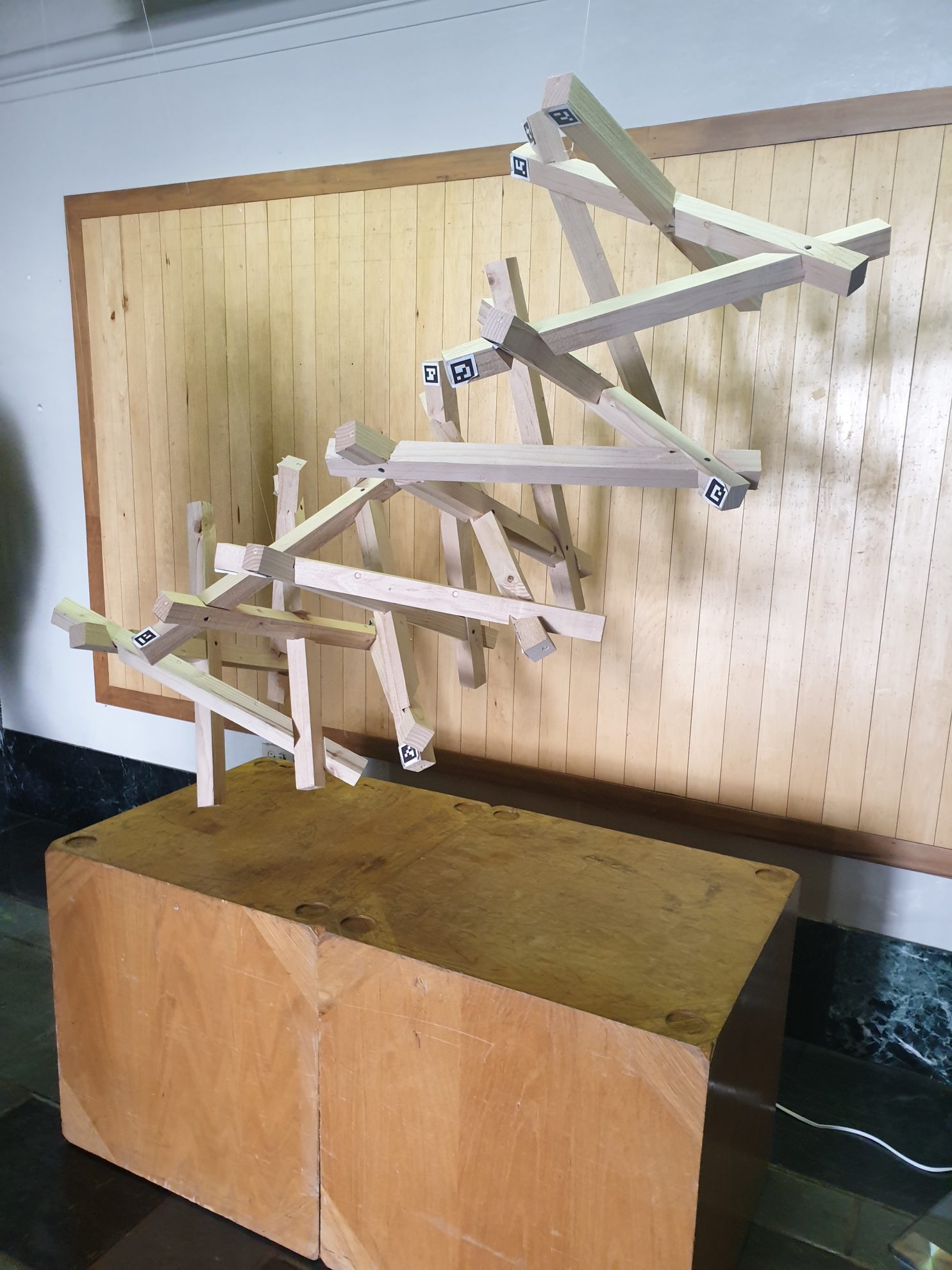
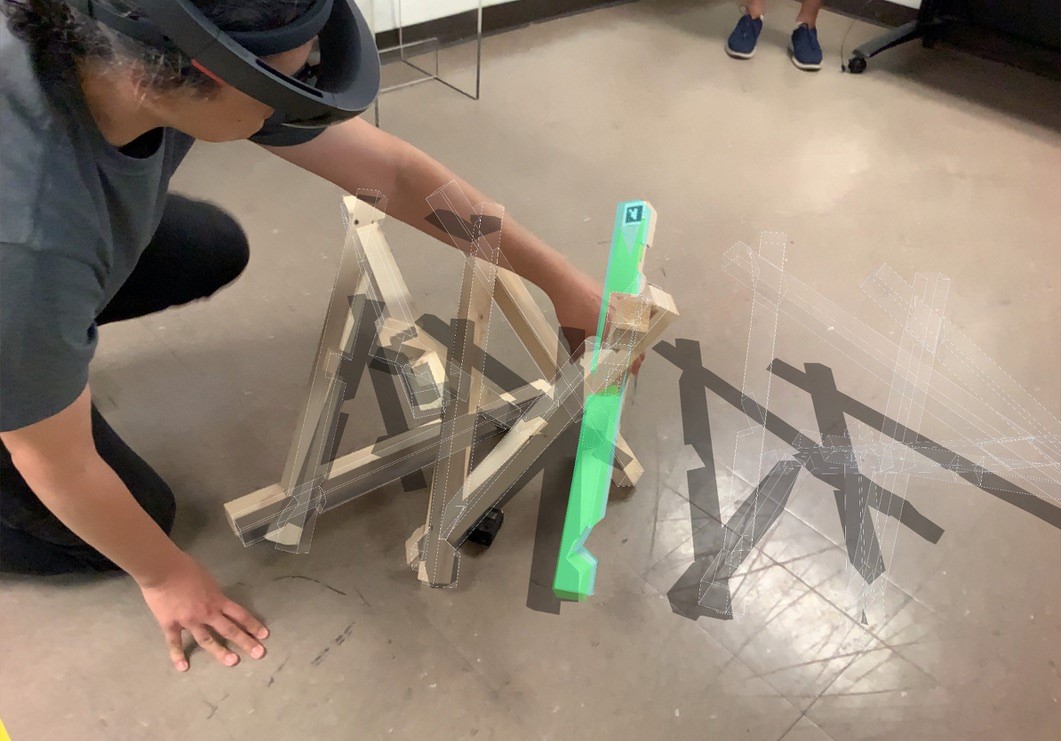
Mark and Tristan – you took part in a workshop run by SHoP Architects – what did it involve? What came out of it?
Mark:
The workshop was a highly condensed exploration of digital-only workflows that SHoP have executed on a variety of their built projects (large and small). It involved designing within a virtual reality environment, generating joint geometry and robot tool paths using various programming languages, digital fabrication with two six-axis KUKA Robots and augmented reality assisted construction. Each component of the workshop had been executed by SHoP within a different context and scale, however in isolation.
Each component of the workshop explored the blurred divide between analogue and digital processes. Prominent examples include the first component that required physical gestures within VR to construct a 3D model and the final component which required a team member to locate a unique structural member within 3D space with the assistance of augmented reality.
James – you took part in a workshop run by ZHA Code – what did it involve? What came out of it?
James:
The workshop I attended was run by ZHA Code and looked at potential applications of machine learning in architecture. The workshop was very exploratory in nature and specifically investigated the applicability of machine learning as a form finding tool. For those who are aware the Block Research Group at ETH Zurich has been developing form finding tools for compressive structures (shells) and the workshop leveraged those tools to ‘teach’ the machine learning algorithm form finding solutions for given mesh topologies. The machine learning software used was pix2pix which was fed a training set which contains pairs of related images such that the model learnt how to convert image A to image B.
The field of machine learning was something I had not explored prior to the workshop and as such the workshop was a great introduction into the theoretical underpinnings of machine learning algorithms. The outcomes of the workshop were typical of a workshop which is truly experimental/exploratory in nature and demonstrated both the potential and current limitations of machine learning in architecture. Given the limited time for training there was ultimately a high level of variance amongst the ‘trained’ models and their ability to ‘predict’ the found form of a given mesh topology.
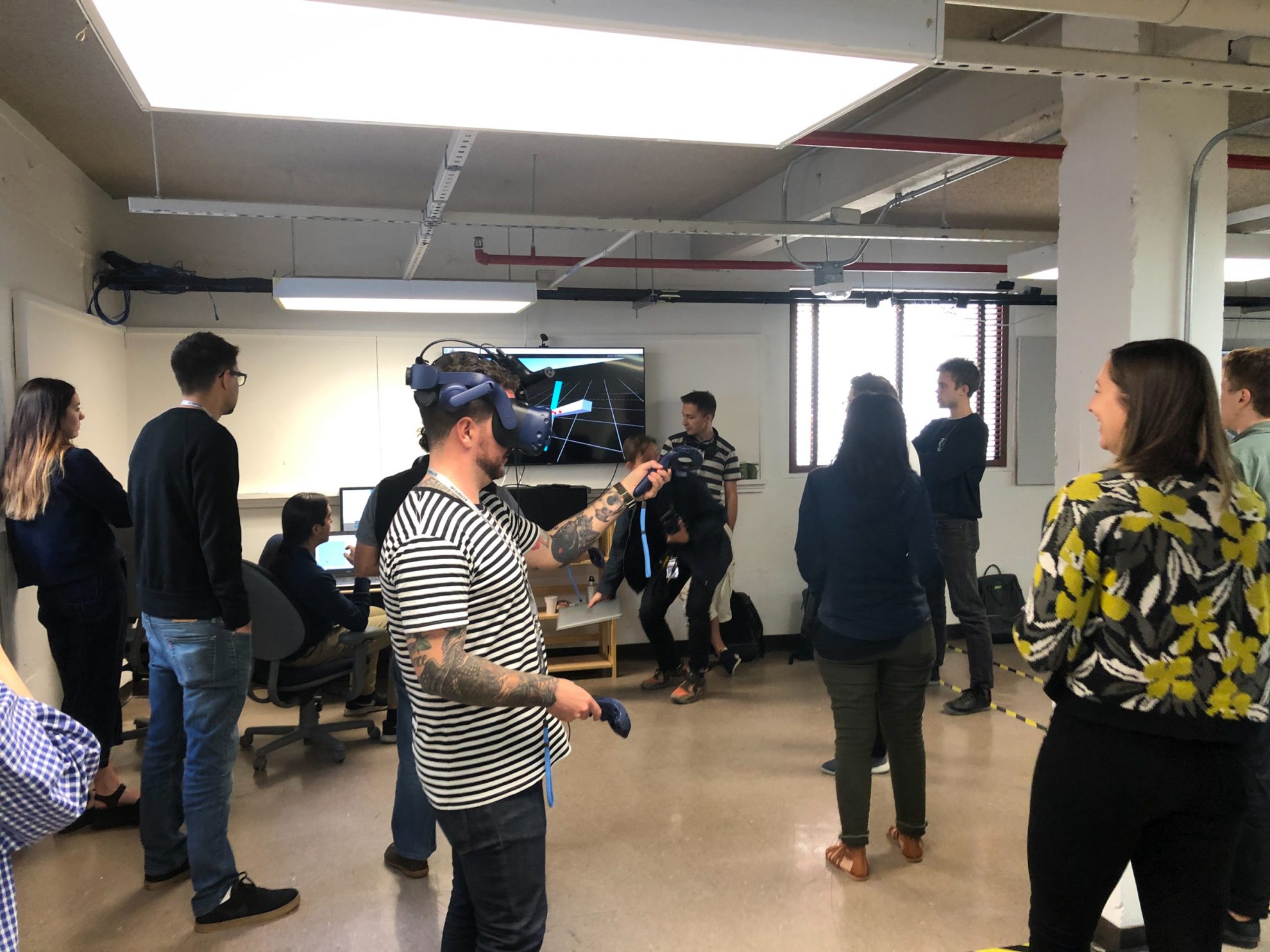
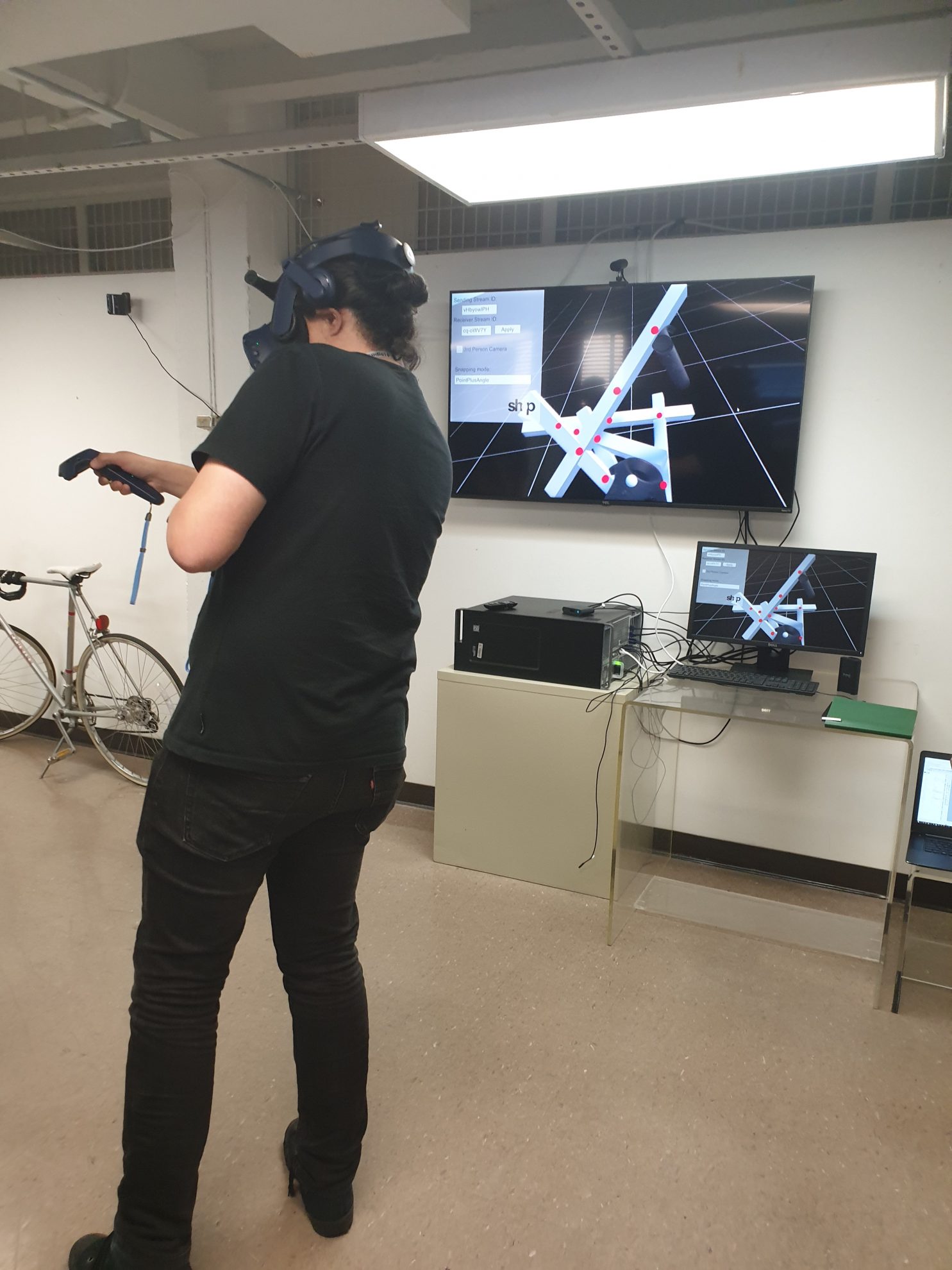
Did the conference outline any major changes in the field? If so, what were they?
Tristan:
We saw the continuation of a theme from the 2018 conference in Mexico City – better use of resources and optimisation of material performance using computation. There is a broad consensus of the significant role of the global construction industries in the current climate emergency, and this was a consistent thread across the six days of workshop and conference.
To this end, 2019’s conference represented a strengthening of this resolve, with many projects considering the impact of their construction in terms of labour and material, as well as ways of improving structural and environmental performance. We also saw more projects exploring digital fabrication and manufacturing using alternative materials such as soil, rough-sawn timber, and reusable formwork.
There was heated conversation around the impact of artificial intelligence and machine learning, as designers begin to grapple with the rapidly approaching reality of commercially viable software on the market. While a future of fully automated design and construction is still relatively distant, interest and application will only grow, and we need to continually investigate this field to effectively leverage these tools to support our design practice.
James:
It was interesting seeing how the discourse around digital computation in architecture has evolved in a relatively short time from questions of style and whether ‘parametricism’ was going to be a successor to the universality and ubiquity of ‘modernism’ to a far more multifarious and diverse discussion around the applicability of digital tools and processes in analogue methodologies. Machine learning/AI was indeed a hot topic as it has emerged as having the potential to create a paradigm shift in the AEC industry however outside of that discussion a significant portion of the research looked towards finding the ‘craft’ within digital fabrication. As Tristan mentioned there was a strong aspiration in finding ways to insert the human element into digital processes. As such, much of the work done aligned with COX’s design ethos and provided ample inspiration in how we may hold onto the tradition of craft of architecture whilst continuing to be at the forefront of digital computation and the broadening of the solution space such tools provide.
All three of you are part of COX’s Computational Design Group – what is this groups key objectives? And why is it important for the group to attend conferences like these?
Tristan: The COX CDG, as a nationally distributed collective of expertise, exists as a means of collecting and disseminating knowledge as well as supporting projects and endeavours of each studio as needs arise. Its core objectives are to ensure COX remains at the forefront of innovative design practice, catalysed by technological innovation. This is achieved by supporting the development and integration of computational design processes across the practice, codifying tacit knowledge to enable its dissemination, and providing our design teams with the most effective tools to produce the most distinctive and performative additions to our built environment. We seek and support excellence and innovation in everything that we do.
Attending conferences such as ACADIA is critically important to ensuring that we are abreast of the most current developments in the field. At these events we can interrogate emergent approaches in design computation, and critically appraise their suitability for integration within our distinctive design practice. It is important to remember that not all prospective new technologies are appropriate – or needed – and it is our responsibility as design technologists to sift the wheat from the chaff and ensure that we operate with sensitivity in our work to ensure excellence in all outcomes for our clients, community, stakeholders, and planet. On top of that, it is energising to be present at such exciting events, where the brightest minds of our industry connect to engage in discussion around finding solutions to the biggest challenges of our industry and community.
